Explore Tochigi Prefecture - Japan Travel, Asia
Tochigi Prefecture is a hidden gem located in the Kanto region of Japan, just a short train ride from the hustle and bustle of Tokyo. Known for its striking natural beauty, rich cultural heritage, and historic landmarks, Tochigi offers a perfect blend of modern convenience and traditional charm. Visitors can explore breathtaking UNESCO World Heritage Sites, serene mountains, lush forests, and rejuvenating onsen hot springs. It's also home to Nikko National Park, a paradise for hikers and nature lovers. This peaceful region stands out for its unique experiences that give travelers a taste of authentic Japan, far from the busy urban centers.
Population: Approximately 1.9 million in 2023.
Economy: Tochigi Prefecture's economy is driven by a mix of agriculture, manufacturing, and tourism. Known for producing strawberries, rice, and kanpyo, it also hosts automotive and electronics industries. Tourism, especially in Nikko, plays a significant role in its economy.
Landmarks: Famous for the Nikko National Park, Nikko Toshogu Shrine, and the Ashikaga Flower Park.
Japan
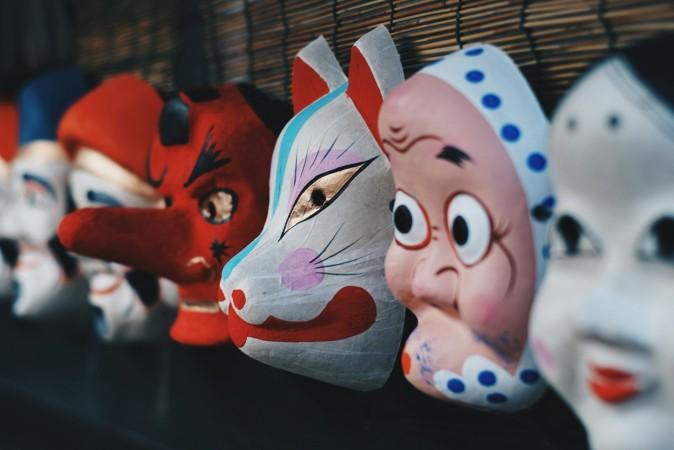
Overview of Tochigi Prefecture
History & Cultural Influence
Tochigi Prefecture boasts a rich and vibrant history that dates back to ancient Japan. It was once a crucial hub during the Edo Period, with Nikko serving as the spiritual and political center, particularly due to the Nikko Toshogu Shrine, a UNESCO World Heritage Site. The region is also heavily influenced by both Shintoism and Buddhism, as seen in its many temples and shrines, such as Rinno-ji Temple and Futarasan Shrine. These spiritual sites attract pilgrims and visitors alike, who come to marvel at the intricate architecture and serene surroundings. Tochigi’s cultural landscape is shaped by a blend of these historical and religious influences.
Interaction with the Locals
Tochigi Prefecture has a population of around 1.9 million people. While the majority of residents live in urban areas like Utsunomiya, the capital city, a significant portion of the population resides in rural towns and villages. Despite modernization, the region's citizens value their rich cultural heritage, making it a welcoming destination for visitors seeking to experience authentic Japanese culture.
Uncover the essence of Japan with our exclusive tours—explore all options here for a journey like no other.
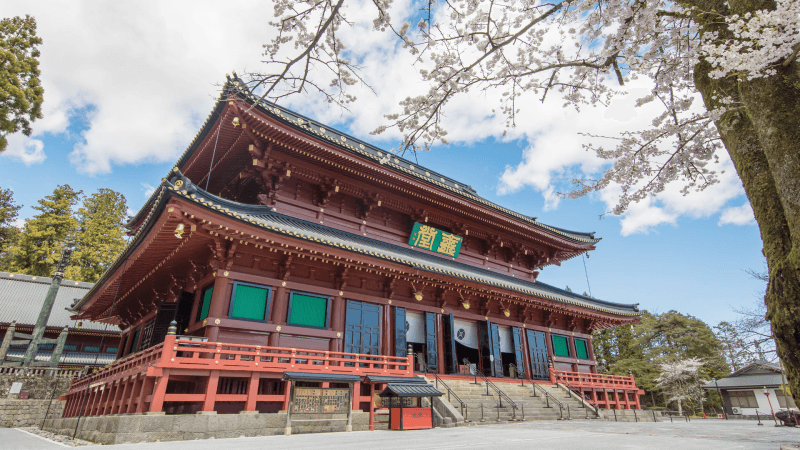
Rinno-ji Temple - © 輪王寺 (Nikko-zan Rinnoji Official Site)
Top Attractions in Tochigi Prefecture
Tochigi Prefecture is filled with incredible sights that showcase the region’s natural beauty, cultural heritage, and historical significance. These top attractions offer a variety of experiences, from exploring ancient temples to enjoying stunning landscapes.
Nikko National Park
A crown jewel of Tochigi, Nikko National Park is a stunning area filled with waterfalls, lakes, and scenic hiking trails. The park’s iconic Kegon Falls, one of Japan’s top three waterfalls, is a breathtaking sight, particularly in autumn when the leaves change color. The park also offers various outdoor activities like boating on Lake Chuzenji or soaking in the nearby Kinugawa Onsen.
Nikko Toshogu Shrine
This lavish shrine, a UNESCO World Heritage Site, is dedicated to Tokugawa Ieyasu, one of Japan’s most important historical figures. The intricate carvings, gold leaf decorations, and peaceful setting make it a highlight for history lovers and spiritual seekers. Don’t miss the famous Yomeimon Gate and the Three Wise Monkeys carving, which are symbols of wisdom and morality in Japanese culture.
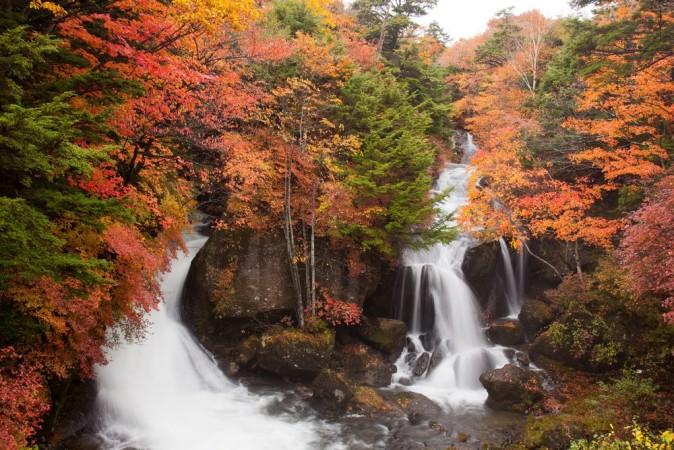
Nikko National Park - © The Global Alliance of National Parks
Ashikaga Flower Park
Known for its spectacular floral displays, Ashikaga Flower Park is a must-visit, especially during the spring and early summer. The park’s wisteria tunnels are world-renowned, creating an otherworldly experience as you walk under cascading purple blooms. Each season offers different flowers, making it a year-round destination for nature enthusiasts.
Edo Wonderland Nikko Edomura
Step back in time and experience Japan’s Edo period at this immersive theme park. Edo Wonderland offers a unique chance to interact with costumed samurai, ninjas, and geisha while learning about Japan’s feudal era. With live performances, historical re-enactments, and hands-on activities, it’s a fun and educational experience for all ages.
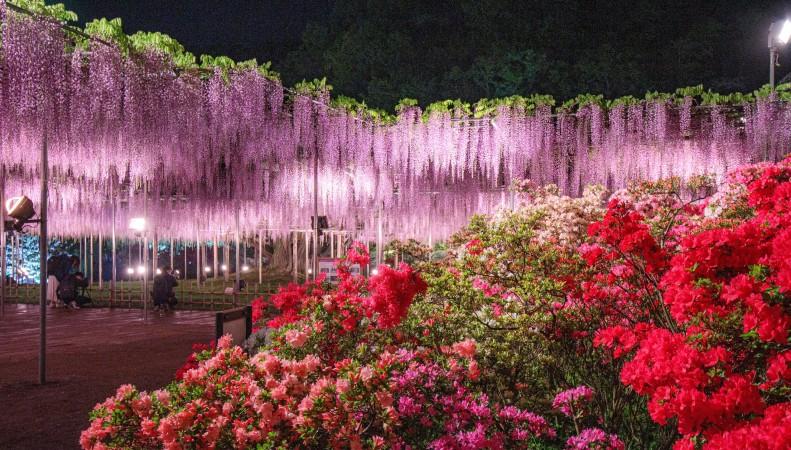
Ashikaga Flower Park - © TimeOut
Must-Try Dishes in Tochigi Prefecture
- Utsunomiya Gyoza: Utsunomiya is Japan's gyoza capital, famous for its delicious dumplings. These gyoza are stuffed with minced pork, cabbage, and garlic, then pan-fried or steamed to perfection.
- Yuba: Yuba, a specialty of Nikko, is made by simmering soy milk until a delicate tofu skin forms on the surface. It can be eaten fresh or dried and is commonly found in soups, salads, and even sushi.
- Soba: Tochigi’s soba is renowned for its earthy flavor and firm texture, thanks to the region’s ideal conditions for buckwheat farming. Served hot in a flavorful broth or cold with dipping sauce, soba is a healthy and satisfying dish.
- Tochiotome Strawberries: Tochigi is Japan’s top producer of strawberries, particularly the Tochiotome variety, which is known for its sweetness and juiciness. From winter through spring, you can enjoy strawberry picking at farms across the prefecture.
- Nasu Wagyu Beef: For meat lovers, Nasu Wagyu beef is a must-try. This premium beef from the Nasu region is prized for its tenderness and rich marbling. Tochigi offers wagyu dishes such as steak, sukiyaki, and shabu-shabu, allowing you to savor the exquisite flavor of this locally raised beef.
- Ayu Dishes: Ayu, or sweetfish, is a river fish commonly found in the clear streams of Tochigi, especially around Nikko. It's typically grilled whole over an open flame and served with salt, allowing the natural flavor of the fish to shine. Ayu is considered a delicacy, particularly in the summer months when the fish is at its best.
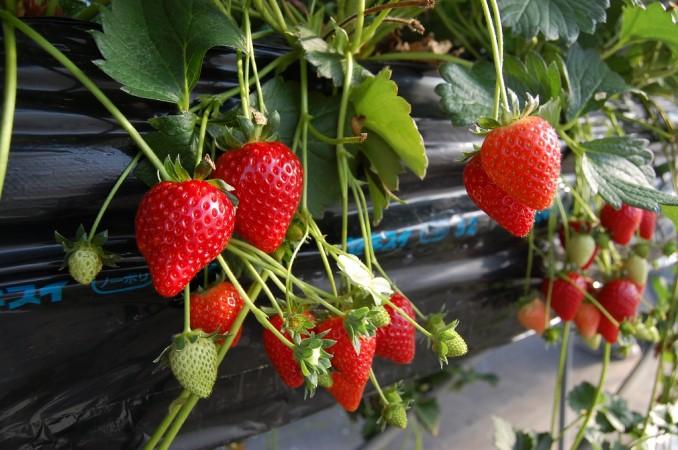
Tochiotome Strawberries - © The Strawberry Kingdom Tochigi
Festivals & Local Celebrations
Tochigi Prefecture is home to a variety of vibrant festivals that reflect the region’s cultural heritage and local traditions. Each event brings a distinct experience on Tochigi's rich history, spirituality, and community spirit.
Nikko Toshogu Shrine Grand Festival
The festival, held twice a year in May and October, celebrates the life of Tokugawa Ieyasu, the founder of the Tokugawa Shogunate. The highlight of the festival is the Procession of 1,000 Samurai, where participants dress in full samurai armor, re-enacting the procession to Tokugawa Ieyasu’s mausoleum. This majestic parade, featuring historical costumes, horses, and traditional weaponry, draws visitors from around the world. The festival also includes Shinto rituals, martial arts demonstrations, and Yabusame (traditional horseback archery).
Utsunomiya Gyoza Festival
The Utsunomiya Gyoza Festival is held every November to commemorate the city's title as Japan's gyoza capital. This lively event showcases a wide variety of gyoza from different local vendors, allowing visitors to sample unique flavors and styles. The festival also features gyoza-eating contests, live music performances, and family-friendly activities. It’s a fun-filled event for foodies and a great way to experience the local culinary scene.
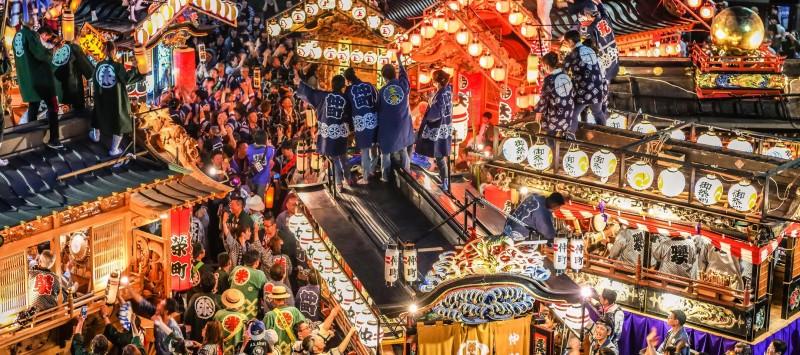
Nikko Toshogu Shrine Grand Festival - © Visit Tochigi
Mashiko Pottery Fair
The Mashiko Pottery Fair, held twice a year in May and November, is a prominent event for fans of traditional Japanese pottery. Mashiko is renowned for its handcrafted ceramics, and during the festival, local artisans showcase their finest works. Visitors can browse hundreds of stalls filled with pottery, from everyday tableware to exquisite art pieces. The fair also offers pottery-making workshops where participants can try their hand at crafting their own creations. It’s a perfect event for those who appreciate fine craftsmanship and want to take home a unique souvenir.
Nasuno Summer Festival
Held every July, the Nasuno Summer Festival is a colorful celebration that brings the community together with traditional mikoshi (portable shrine) parades, taiko drum performances, and bon odori dancing. The festival culminates in a spectacular fireworks display, lighting up the summer night sky. The festival honors the region’s agricultural roots, with plenty of local food stalls offering regional specialties and seasonal produce. It’s a family-friendly event that captures the joyful spirit of summer in Tochigi.
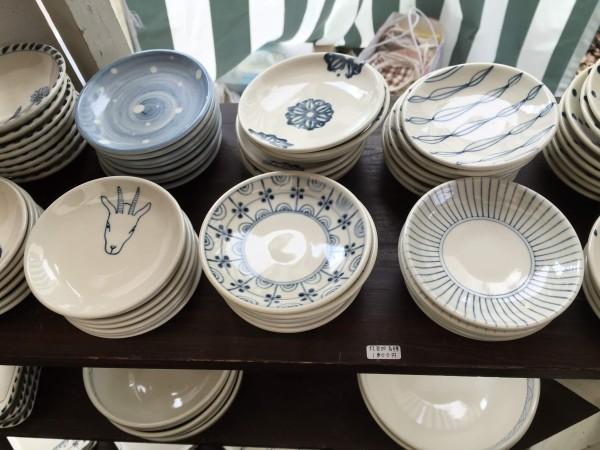
Mashiko Pottery Fair - © LocoBee(ロコビー)
What to Do in Tochigi Prefecture
- Hiking Trails in Tochigi: Tochigi’s lush landscapes make it a fantastic destination for hiking and nature walks. Trails in Nikko National Park provide breathtaking views of waterfalls, mountains, and serene lakes. Mount Nantai and Kegon Falls are popular spots for those who love exploring the outdoors.
- Onsen Relaxation: Relax in one of Tochigi’s many onsen (hot springs) after a day of sightseeing. The Kinugawa and Shiobara areas are famous for their natural hot springs, offering scenic views and traditional ryokan stays.
- Cycling Tours: Tochigi’s scenic countryside is ideal for cycling enthusiasts. You can rent bicycles in areas like Utsunomiya or along the scenic routes of Nasushiobara and Mashiko, where quiet roads and beautiful landscapes create the perfect cycling environment.
- Cultural Workshops: Experience traditional Japanese crafts firsthand by joining a pottery-making workshop in Mashiko, a town known for its ceramics. You can also participate in samurai training sessions, calligraphy lessons, or even try on a kimono to immerse yourself in the local culture.
Looking for more adventures? Dive into Osaka, another famous destination in Japan, with our article here.
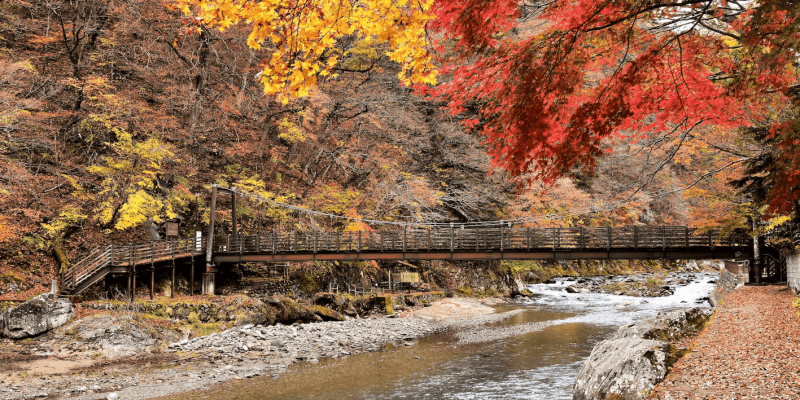
Hot Springs Relaxation at Shiobara Onsen area - © SNOW MONKEY RESORTS
Shopping in Tochigi Prefecture
- Local Souvenirs: Tochigi is known for its high-quality Mashiko pottery as these hand-crafted ceramics have a rustic charm and are often used in traditional Japanese tea ceremonies. Another popular item is woodwork from Nikko, where artisans craft beautiful wooden boxes, trays, and ornaments.
- Shopping Streets: In Nikko, the shopping streets are lined with stores selling everything from traditional sweets to locally made crafts. Utsunomiya, for example, offers a mix of modern and traditional shopping experiences, with larger shopping centers alongside quaint, independent boutiques.
- Farmers Markets: For fresh, locally grown produce, Tochigi’s farmers markets are a must-visit place in the prefecture. Seasonal fruits, vegetables, rice, and local sake are all available to purchase. The strawberries, in particular, are renowned nationwide, and many markets allow you to pick your own.
- Pottery & Craft Markets: If you’re visiting during one of c’s famous pottery fairs, you can purchase authentic ceramics directly from the artisans themselves. These fairs are a great opportunity to find unique, hand-crafted pieces that reflect the region’s cultural heritage.
Explore the unique charm of Matsumoto, another must-visit place in Japan, in our article here.
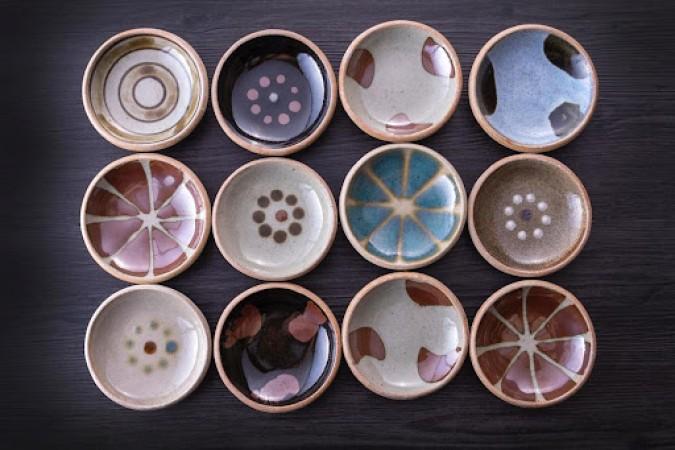
Mashiko Pottery - © Mashiko Tourism
Weather in Tochigi Prefecture: Best Time to Visit
Tochigi Prefecture experiences a temperate climate with four distinct seasons, each offering a unique experience for travelers that will ensure a great exploration trip all year round.
Spring in Tochigi Prefecture
Spring is one of the best times to visit Tochigi when the weather is mild and temperatures range from 10°C to 20°C (50°F to 68°F), and the prefecture is awash in cherry blossoms and vibrant flowers. Places like Ashikaga Flower Park come alive with colorful blooms, making this an ideal season for outdoor activities and sightseeing. Spring is also the season for festivals, such as the Nikko Toshogu Shrine Grand Festival.
Summer in Tochigi Prefecture
Summer in Tochigi can be warm and humid, with temperatures often climbing above 30°C (86°F). However, the higher elevations of Nikko National Park and the Nasu Highlands offer cooler escapes from the heat, making them perfect for hiking, boating, and cycling. Summer is also the season of vibrant festivals and firework displays, such as the Nasuno Summer Festival.
Autumn in Tochigi Prefecture
Autumn is undoubtedly the most attractive season to visit Tochigi, as the region is known for its fall foliage. Temperatures range from 15°C to 25°C (59°F to 77°F) early in the season, gradually dropping as winter arrives. Nikko National Park becomes a stunning canvas of red, orange, and yellow leaves, making it a prime spot for autumn foliage viewing. This season is ideal for outdoor activities like hiking and photography.
Winter in Tochigi Prefecture
Winter in Tochigi is cold, with temperatures often dropping below 0°C (32°F), especially in the mountainous regions. However, winter brings a different kind of charm with snow-covered landscapes and opportunities for skiing, snowboarding, and soaking in onsen hot springs. The Shiobara Onsen and Kinugawa Onsen areas are popular for relaxation in winter. The region's winter festivals, like the Nikko Snow Festival, add a magical touch to the season.
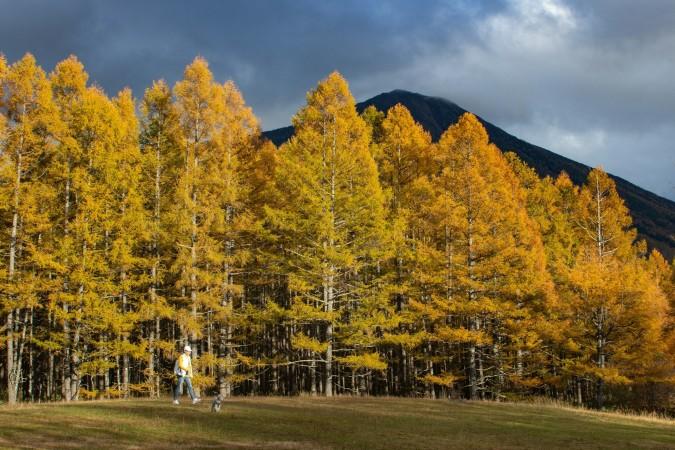
Admire the beauty of Autumn in Tochigi - © Tara Vester
Essential Travel Information
Getting Around Tochigi Prefecture
- Local Buses: Tochigi's local buses cover smaller towns and tourist spots, particularly in rural areas like Nikko. Tobu Bus operates routes to major attractions within the prefecture, including the Nikko World Heritage Sites and Kinugawa Onsen. Bus schedules may be less frequent in remote areas, so it’s advisable to plan accordingly.
- Car Rentals: Renting a car is a great option for those looking to explore Tochigi’s rural areas and scenic countryside at their own pace. Car rental services are available at Utsunomiya, Nikko, and major transportation hubs.
- Bicycle Rentals: For eco-friendly travel, bicycle rentals are available in areas like Nikko and Mashiko. Cycling is a pleasant way to explore Tochigi’s countryside, pottery towns, and serene temples.
- Rail Travel: Easiest way to travel to nearby regions. The JR Utsunomiya Line and Tohoku Shinkansen connect Tochigi to large towns such as Tokyo and Sendai, while the Nikko Line provides direct access to Nikko. Utsunomiya Station is the prefecture's primary hub. Get a Japan Rail Pass so you can use most JR trains without additional charges.
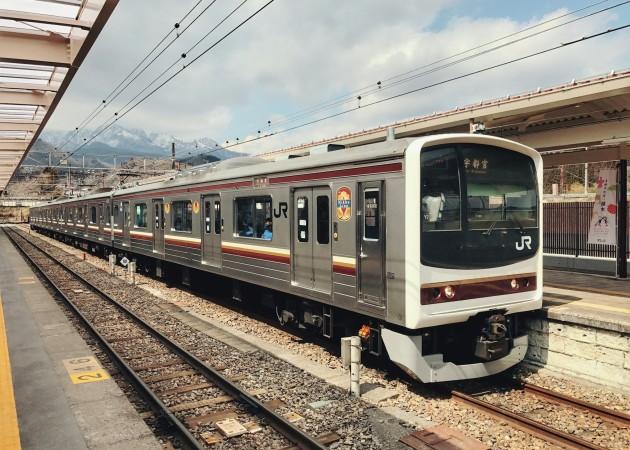
JR Nikko Line - © Nakaharu Line
ATM & Banking Services
In Tochigi Prefecture, accessing cash is generally easy, with ATMs available in convenience stores, post offices, and various locations across urban and rural areas. Many of these ATMs support foreign credit and debit cards, offering services in English and other languages. While credit cards are commonly accepted at major tourist destinations, hotels, and larger restaurants, cash is still the preferred method of payment in smaller towns, local eateries, and markets.
Where to Stay in Tochigi Prefecture
- Traditional Ryokan: These inns provide a unique cultural immersion with tatami-mat rooms, futons, and onsen hot springs. Guests can also enjoy kaiseki (multi-course) meals, which feature local and seasonal ingredients. Ryokan are ideal for travelers looking to relax and experience the charm of traditional Japanese culture.
- Guesthouses and Farm Stays: For a more personal and immersive experience, guesthouses and farm stays in Tochigi’s rural areas provide a unique opportunity to connect with the local culture. Many of these accommodations offer a chance to participate in traditional farm activities or enjoy home-cooked meals prepared with fresh, local ingredients.
- Luxury Hotels: Travelers seeking a more luxurious experience will find premium accommodations in scenic areas, offering upscale services and amenities. These luxury hotels and resorts provide a refined stay with fine dining options, spacious rooms, and breathtaking views of Tochigi’s natural beauty.
Articles for you

Explore Yala National Park - Sri Lanka Travel, Asia
Tucked away in Sri Lanka’s southeastern corner, Yala National Park is where wild nature meets deep tradition. Known worldwide for its leopard population, the park is also home to elephants, sloth bears, crocodiles, and hundreds of bird species. Beyond wildlife, Yala opens doors to a cultural landscape dotted with ancient temples, Buddhist ruins, and coastal villages. For travelers seeking more than just a safari, Yala offers a chance to explore eco-tourism, local communities, and sacred heritage sites.
Population: The Yala National Park area doesn’t have a human population.
Economy: The economy around Yala National Park thrives on a blend of eco-tourism, agriculture, and local services. Safari tours, eco-lodges, and cultural experiences drive steady income for nearby towns like Tissamaharama and Kataragama, supporting thousands of families.
Landmarks: Famous for Block I of Yala and wildlife encounters, including elephants, sloth bears, crocodiles, and exotic bird species.

Explore Galle - Sri Lanka Travel, Asia
Nestled on Sri Lanka’s southern coastline, Galle is a vibrant city where history meets the sea. Its cobbled streets, colonial architecture, and serene beaches make it a must-visit destination for travelers seeking a blend of culture, adventure, and relaxation. A UNESCO World Heritage site, Galle captivates visitors with its Dutch Fort, bustling markets, and friendly locals. Whether you’re exploring the ramparts at sunset or savoring fresh seafood by the shore, Galle promises an unforgettable journey into Sri Lanka’s heritage.
Population: Approximately 113,000 in 2023.
Economy: Galle’s economy thrives on tourism, trade, and fisheries. The city’s historic fort, colonial architecture, and coastal charm draw thousands of international visitors each year, making tourism its main economic driver. Fishing remains vital for local livelihoods, supplying fresh seafood across the region.
Landmarks: Famous for the Galle Fort, Dutch Reformed Church & Maritime Museum, and Unawatuna Beach.

Explore Bentota - Sri Lanka Travel, Asia
Nestled along Sri Lanka’s southwestern coast, Bentota is a tropical paradise that blends golden beaches, vibrant culture, and thrilling adventures. Famous for its calm waters, luxury resorts, and scenic river estuary, Bentota has become a top destination for travelers seeking both relaxation and authentic experiences. From serene beach walks at sunrise to adrenaline-pumping water sports, this coastal town offers a perfect balance of leisure and exploration. With its proximity to Colombo and Galle, Bentota is easy to reach, making it an ideal stop for both short escapes and extended holidays.
Population: Approximately 37,000 in 2023.
Economy: Bentota’s economy thrives mainly on tourism, which drives local businesses such as hotels, restaurants, and wellness retreats. The town also benefits from fishing, coconut cultivation, and handicrafts like wood carving and batik textiles. Many residents rely on the growing demand for water sports and Ayurvedic treatments, making tourism the backbone of both income and employment in the area.
Landmarks: Famous for Bentota Beach, Bentota River Safari, and Kande Vihara Temple.

Explore Mirissa - Sri Lanka Travel, Asia
Mirissa is a charming coastal town on Sri Lanka’s southern shoreline. Known for its golden beaches, turquoise waters, and vibrant marine life, it has become a must-visit stop for travelers exploring the island. Many come for whale watching, surfing, and sunset views at Coconut Tree Hill, but Mirissa offers much more than postcard beauty. The fishing boats you see anchored by the bay carry generations of stories. Local traditions, delicious cuisine, and a laid-back rhythm of life shape every visitor’s experience.
Population: Approximately 4,700 in 2023.
Economy: Mirissa’s economy is largely shaped by its coastal location. Fishing has long been the backbone of local livelihoods, with generations relying on the Indian Ocean for income. In recent decades, tourism has become the main driver of growth, thanks to whale watching, surfing, and beachside hospitality.
Landmarks: Famous for Mirissa Beach, Coconut Tree Hill, and Parrot Rock Bridge.

Explore Nuwara Eliya - Sri Lanka Travel, Asia
Tucked away in the Central Highlands of Sri Lanka, Nuwara Eliya is often called “Little England”. With its rolling tea plantations, cool misty mornings, and colonial charm, this mountain town feels like a step into another world. Travelers come here to breathe fresh air, walk through flower gardens, sip the finest Ceylon Tea, and enjoy a pace of life far from the island’s busy cities. Whether you’re drawn by scenic landscapes, heritage architecture, or the warmth of its people, Nuwara Eliya is a destination that blends nature, culture, and history in perfect harmony.
Population: Approximately 781,000 in 2023.
Economy: Nuwara Eliya’s economy thrives mainly on tea production, as it sits in the heart of Sri Lanka’s central highlands, famous worldwide for Ceylon Tea. The city also benefits from a growing tourism industry, attracting visitors with its colonial charm, cool climate, and scenic landscapes.
Landmarks: Famous for Gregory Lake, Hakgala Botanical Garden, and Victoria Park.

Explore Sukau - Malaysia Travel, Asia
Nestled on the banks of the Kinabatangan River in Sabah, Malaysian Borneo, Sukau is a destination where wildlife, culture, and conservation come together. Known as one of Asia’s top spots for river safaris and eco-tourism, this quiet village offers a front-row seat to encounters with Bornean orangutans, pygmy elephants, proboscis monkeys, and exotic birdlife.
Population: Approximately 1,400 in 2019.
Economy: Sukau’s economy is shaped by its riverine location and natural resources. Traditionally, the Orang Sungai community relied on fishing, small-scale farming, and forest gathering for their livelihood. Today, the village has shifted toward eco-tourism, with river cruises, jungle trekking, and homestays providing income.
Landmarks: Famous for the Kinabatangan River cruises, Gomantong Caves, and Ox-bow lakes and wetlands.
